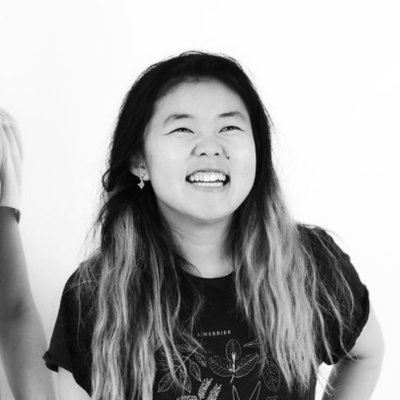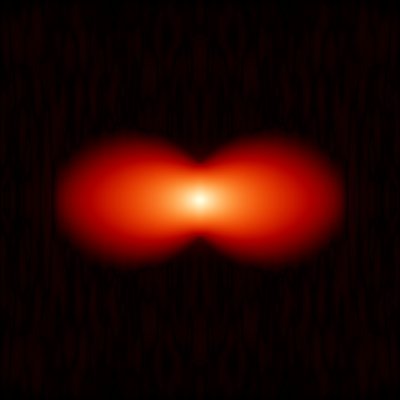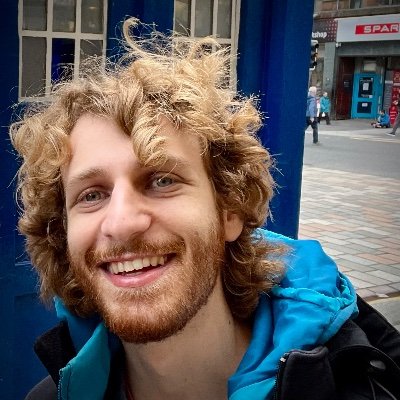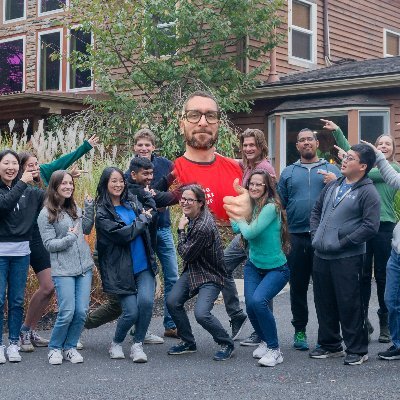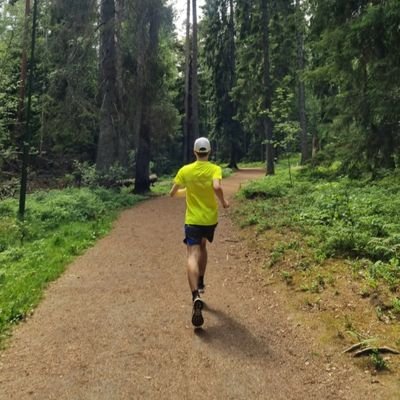
Andrew York
@AndrewGYork
Followers
6K
Following
16K
Media
127
Statuses
3K
I'm a physicist; I develop new microscopy techniques.
San Francisco, CA
Joined November 2017
Re-imagine scientific publishing. What would you change? My answer: No paywall, no delay, straight to the web. Open data, open code, interactive/animated figures. Transparent, rolling peer review, version control, CCBY license, citable DOIs. See it here: https://t.co/VeeP0TNriB
43
372
1K
My friend Abi made a 3D printed cat planter that gets angry when you don't water it! I love the intersection of hacking and automation and art and creativity. If you always wanted to learn "maker" skills but don't know where to start, watch her video: https://t.co/g6VpZy0qY6
0
0
12
We (@AndrewGYork and I) are still working on the manuscript describing our artefact-free, noise-appropriate, resampling approach, but we've made a Google Colab notebook where you can try it out: https://t.co/QEazul29MN Below, we go from 104 nm per px to 8 nm per px.
2
14
55
We (@AndrewGYork, @RunningPhoton, @microRussell and I) are still working on the manuscript describing our automatic parameter-free deconvolution approach, but we've made a Google Colab notebook where you can try it out without needing to install anything: https://t.co/7NpsTQrwBO
3
29
132
MagLOV results reproduced✅ We cranked the LED power and found the response can be much faster! Absolute change roughly the same at each LED power, i.e. contrast change likely due to the background, not MagLOV response. Many thanks to the Calico folks for sharing their discovery!
3
10
38
#AIRR microscopy, the final touch: Real-time multi-angle projections! -> Get ultra-fast 2D projections of 3D objects of any refractive index, with a light-sheet microscope that uses a single AIR objective at the sample! Crazy!
3
20
61
Fantastic moment (of many) @ #MBLPhysiology @MBLScience w/ students looking at microtubules & freshly-purified squid kinesin on TIRF microscope they just built! This student team shepherded by @evangelosgg & fellow microscopists @TanFad @JennySachweh @AndrewGYork
3
8
89
And while you're meeting MagLOV, you should also meet Ashleen Rai (@RaiAshleen). Ashleen's been volunteering her nights and weekends, learning protein engineering from @Maria_Ingaramo, and bringing "magnetogenetics" one BIG step closer to reality. She's a joy to work with.
3
1
51
Imagine drugs that ONLY work near a magnet. Imagine eliminating drug side effects outside the target organ. Today, it's just magnetofluorescence, but we're working towards *magnetogenetics*: the ability to turn arbitrary proteins on and off, wherever and whenever we want.
3
3
82
Why bother? Why make a magnetically responsive protein? It's actually kinda magical. Light changes AsLOV2's shape; this enables "optogenetics", controlling proteins with light. Unfortunately, humans are opaque. But imagine an antibody drug that turns off with *magnets*....
4
5
80
I hate when papers obscure protein sequences, so here's MagLOV in a tweet. MLATTLERIE KNFVITDPRL PDNPIIFASD SFLQLTEYSR EEILGRNpRF LQGPETDRAT VRKIRDAIDN QTEVTVQLIN YTKSGKKFWN LFHvQPMRDQ KGDVQYFIGV kLDGTEHVRD AAEREkVMLI KKTAENImEA AKEL (mutations vs AsLOV2 are in lowercase)
4
14
153
@Maria_Ingaramo and @RaiAshleen made MagLOV out of an oat-plant protein called AsLOV2. Each round, they screen ~3000 single-mutants, and select for enhanced magnetofluorescent response. Wild-type AsLOV2 has almost no magnetic response, but only five mutations got us to ~75%!
3
2
39
Last year, we discovered that fluorescent proteins get a little dimmer in modest magnetic fields (e.g. GFP gets ~1% dimmer in ~10 mT). MagLOV gets a LOT dimmer. Here's ΔF/F ≥ 75% in live E. coli! It works purified, and in mammalian cells too. https://t.co/szuSj10XhA
3
2
54
Meet MagLOV: an engineered protein that responds STRONGLY to magnetic fields. This is a fluorescence timelapse of MagLOV in E. coli. We're waving a (small) magnet under the plate. Can you tell where the magnet is? Want some? It's on Addgene now! https://t.co/eWs0aAIT1A
40
295
1K
These ideas were born during many long conversations with folks like @microRussell, @JamesDManton, @RunningPhoton, @l_masu, @Maria_Ingaramo, and more recently @TanFad. Please tag yourself if I forgot you! I'm lucky to have these brilliant folks as colleagues and co-inventors.
1
0
6
For more in this spirit, make sure to check out @JamesDManton's recent presentation: https://t.co/EfPUM8WmIB
@christlet @RetoPaul @AndrewGYork @RunningPhoton We're still writing the manuscript, so the best I can currently offer is the slides from our FOM2024 talk: https://t.co/EOUky7G0ez We'd actually been a bit distracted by working on single image FRC recently, so it's great that the Delft guys have sorted all that out!
1
0
3
I was also very happy to see Sjoerd et al. highlighting @RunningPhoton's presentation of how to use this type of splitting as a stopping criteria for deconvolution: https://t.co/CmQKWZe835
At which iteration would you stop this image restoration? Comment below.🤔🔬 me, @microRussell, @JamesDManton, @AndrewGYork had an idea, which I am going to present at #FOM2022 | @FOMconferences on Tuesday at 13:25 (CET) in "Image Analysis Methods"
1
0
7
A nice surprise: @SjoerdStallinga cited my tweet :) Open discussion is the most productive form of scholarly publication. Smart people can tell good ideas even if they're not in fancy journals, and kind people give high-fives even when they don't have to. Thanks, Sjoerd!
@SuperResoluSian @LennartHilbert @barrosolab Can you "coinflip split" the image? Meaning, scale image counts to photoelectrons, then flip a coin for each photoelectron to decide if it belongs in imaginary subexposure 1 or imaginary subexposure 2?
2
12
104
Hey magnetogeneticists! I'll be presenting our new results on a highly magnetic-field-sensitive AsLOV2 variant at the Big Quantum Bio meeting tomorrow Thursday, April 18, at 7 am PST/10 am EST/3 pm UK time @ https://t.co/PGzDbUxVnK. See you there!
1
3
23

